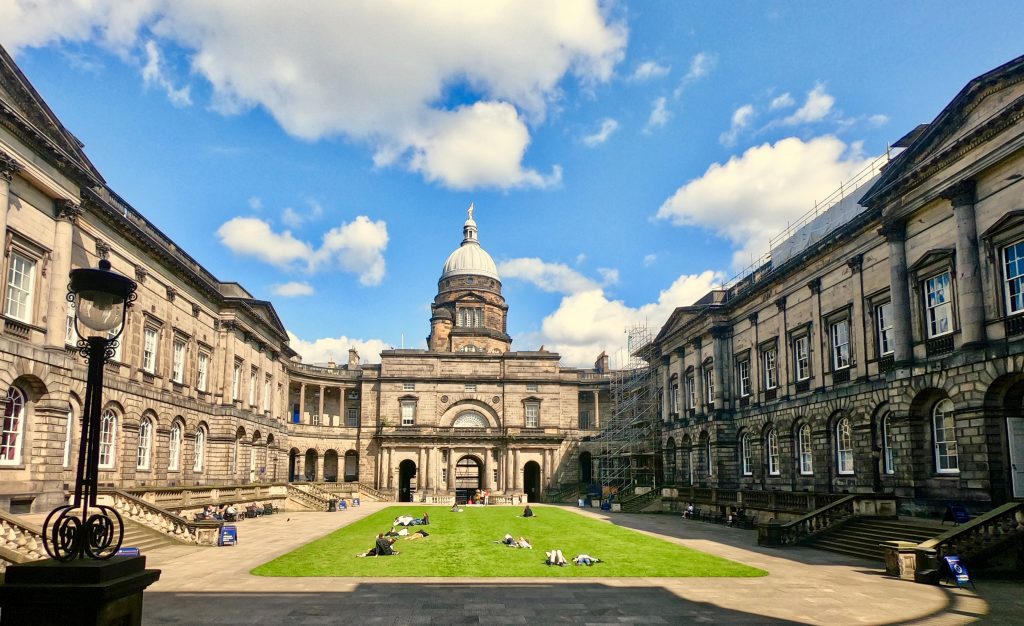New technology transforms how Scotland’s historic buildings are managed, maintained and repaired

Edinburghcitymom/Shutterstock.com
A new software tool, which allows surveys and fabric inspections of traditional buildings to be carried out digitally, has been developed by Historic Environment Scotland (HES), The University of Edinburgh and Heriot-Watt University.
The tool uses a combination of data from laser scanning, which gives precise 3D data in the form of a point cloud, and photogrammetry, which involves the use of multiple overlapping digital photos, which creates a realistic 3D model of a building. From this data, it can then automatically segment a facade into component parts making it easier to detect defects within masonry and extract information regarding the amount of stone and mortar required for conservation repair works.
The tool has been made freely accessible for the conservation sector to use, in the hope that it will be widely adopted by professionals involved in the conservation and maintenance of traditional buildings. Laser scanning and photogrammetry, used in combination with this technology, could greatly improve the efficiency of surveying historic buildings, enabling rapid automated analysis to be undertaken remotely, and offering a cost-effective alternative to traditional methods of inspection which require manual survey and often scaffolding.
Use of this new technology could also strongly support efforts to tackle climate change and national carbon reduction targets, by making it easier and more effective to repair, reuse and retrofit existing buildings.
Lyn Wilson, digital documentation manager at HES, said: “Scotland is home to a rich and diverse built environment of around half a million traditional buildings. Around 20% of the nation’s housing stock is made up of traditional buildings, and it is crucial that these existing assets can be repaired, maintained and adapted effectively to support national sustainability commitments.
“Any repair work to historic buildings must be carried out sensitively, and traditional masonry surveys to identify what conservation work is required can be costly and complex.
“This new tool offers the advantage of being able to conduct inspection and analysis of 3D data remotely, while still obtaining precise results.
“We hope that by making this new technology freely available we can champion the benefits and possibilities that laser scanning and photogrammetry can offer to the management of traditional buildings, and encourage wider adoption of these methods to help protect our precious historic buildings and promote the importance of reuse for a sustainable future”
The creation of the new software tool is the culmination of a collaborative research project between HES, Heriot-Watt University and the University of Edinburgh to develop an innovative approach to the survey of traditional buildings.
Dr Frédéric Bosché, senior lecturer in construction informatics at The University of Edinburgh, said: “Digital technologies have a great role to play in optimising our resources and use of human expertise to preserve our rich historic built environment. This tool aims to improve the efficiency of what is otherwise tedious and time-consuming work, and thereby frees surveyors to focus on activities that really demand their expertise.
“The output of the tool will hopefully support more structured monitoring of historic buildings (in integration with Building Information Modelling). We hope the community will find it useful, and we also look forward to partner with organisations like HES to further develop it.”
Dr Alan Forster, associate professor in building conservation, low carbon materials and construction technology at Heriot-Watt University, said: “Financial austerity forces us to focus more than ever on cost-efficient, accurate evaluation of our historic buildings. The ability of our open source digital technologies to support these activities enables the money for repair to be spent where it is most urgently needed, namely on the building itself.
“Importantly, conservation companies, whether large or small, will benefit from the open source software giving them greater confidence in accurately costing their work, and saving time and materials all within a safer working environment. The ultimate winners are local communities and wider society that should see more of their much-loved historic buildings conserved better with a lower environmental impact as materials can be more sparingly used.”